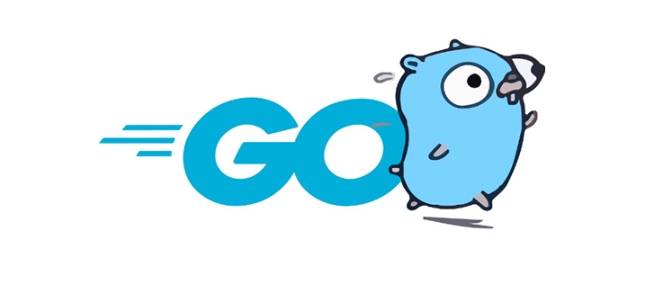使用GO和云功能构建无服务器API
要构建一个无服务器API,需先设置Go环境并安装Google Cloud SDK,然后编写一个HTTP函数处理请求,最后通过gcloud CLI部署到Cloud Functions。1. 安装Go 1.18+和Google Cloud SDK并配置项目;2. 创建Go模块并编写HTTP处理函数,支持GET和POST方法,处理JSON输入并返回响应;3. 简化代码仅保留Handler函数,移除本地服务器逻辑;4. 使用gcloud命令部署函数,指定运行时、入口点和触发方式;5. 测试API的GET和POST接口,验证返回结果;6. 生产环境中应添加CORS支持、输入验证、日志记录,并配置超时与内存限制;7. 可选使用本地服务器或模拟器测试函数。部署后即可通过HTTPS URL访问自动扩展的无服务器API,实现免运维的后端服务。

Building a serverless API with Go and Cloud Functions is a great way to run backend code without managing infrastructure. Google Cloud Functions (GCF) supports Go as a first-class language, making it straightforward to deploy lightweight, event-driven APIs that scale automatically. Here’s how to set one up effectively.

✅ Set Up Your Go Environment
Before writing any code, make sure your local development environment supports Go and the Google Cloud SDK.
- Install Go (1.18+ recommended) from golang.org
-
Install Google Cloud SDK and authenticate:
gcloud auth login gcloud config set project YOUR_PROJECT_ID
- Initialize a Go module:
mkdir my-api && cd my-api go mod init my-api
Go functions for GCF are just regular Go functions with a specific signature. You’ll use the cloud.google.com/go/functions/framework package when testing locally, but it's not required for deployment.

? Write a Simple HTTP Function
Create a file called function.go:
package main
import (
"encoding/json"
"fmt"
"log"
"net/http"
)
// Person represents a simple data structure
type Person struct {
Name string `json:"name"`
Age int `json:"age"`
}
// Handler responds to HTTP requests
func Handler(w http.ResponseWriter, r *http.Request) {
switch r.Method {
case "GET":
fmt.Fprint(w, "Hello from Go Cloud Function!")
case "POST":
var person Person
if err := json.NewDecoder(r.Body).Decode(&person); err != nil {
http.Error(w, "Invalid JSON", http.StatusBadRequest)
return
}
response := map[string]string{
"message": fmt.Sprintf("Hello %s, you're %d years old!", person.Name, person.Age),
}
w.Header().Set("Content-Type", "application/json")
if err := json.NewEncoder(w).Encode(response); err != nil {
log.Printf("Error encoding response: %v", err)
}
default:
http.Error(w, "Method not allowed", http.StatusMethodNotAllowed)
}
}
// Entry point for Cloud Functions
func main() {
http.HandleFunc("/", Handler)
// Use PORT environment variable, default to 8080
port := "8080"
if envPort := os.Getenv("PORT"); envPort != "" {
port = envPort
}
log.Printf("Starting server on port %s", port)
if err := http.ListenAndServe(":"+port, nil); err != nil {
log.Fatalf("Server failed to start: %v", err)
}
}? Note: The
main()function is needed only if you're testing locally or using container-based deployment. For standard GCF, the function is invoked via theHandlerentry point.
But for Cloud Functions, you don’t need the main() server loop — Google handles that. So simplify it:
// simplified_function.go
package p
import (
"encoding/json"
"fmt"
"net/http"
)
type Person struct {
Name string `json:"name"`
Age int `json:"age"`
}
func Handler(w http.ResponseWriter, r *http.Request) {
switch r.Method {
case "GET":
fmt.Fprint(w, "Hello from Go!")
case "POST":
var person Person
if err := json.NewDecoder(r.Body).Decode(&person); err != nil {
http.Error(w, "Bad Request", http.StatusBadRequest)
return
}
response := map[string]string{
"message": fmt.Sprintf("Hi %s, age %d!", person.Name, person.Age),
}
w.Header().Set("Content-Type", "application/json")
json.NewEncoder(w).Encode(response)
default:
http.Error(w, "Method not allowed", http.StatusMethodNotAllowed)
}
}Save this as main.go. The entry point is Handler, which will be specified during deployment.
☁️ Deploy to Google Cloud Functions
Use the gcloud CLI to deploy:
gcloud functions deploy go-api-function \ --runtime go119 \ --entry-point Handler \ --trigger-http \ --allow-unauthenticated \ --region us-central1
Replace
go119with the latest supported Go version (e.g.,go121).
After deployment, you’ll get an HTTPS URL like:
https://us-central1-YOUR_PROJECT.cloudfunctions.net/go-api-function
Test it:
curl -X GET https://<your-function-url>
curl -X POST https://<your-function-url> \
-H "Content-Type: application/json" \
-d '{"name":"Alice","age":30}'You should get a JSON response:
{"message":"Hi Alice, age 30!"}?️ Tips for Production Use
While this setup works for simple cases, consider these points for real-world use:
- Use API Gateway or Cloud Endpoints: For better control over routing, auth, rate limiting.
- Add CORS support if serving from a frontend:
w.Header().Set("Access-Control-Allow-Origin", "*") w.Header().Set("Access-Control-Allow-Methods", "GET, POST, OPTIONS") w.Header().Set("Access-Control-Allow-Headers", "Content-Type") if r.Method == "OPTIONS" { return } - Validate payloads and sanitize inputs.
- Enable Cloud Logging — use
log.Printf(); logs appear in Cloud Logging. - Set timeouts and memory limits during deployment:
--timeout 60s --memory 256MB
? Test Locally with Emulator (Optional)
You can test locally using a simple Go server:
// main.go
package main
import (
"log"
"net/http"
)
func main() {
http.HandleFunc("/", Handler)
log.Println("Starting local server on :8080")
log.Fatal(http.ListenAndServe(":8080", nil))
}Then run:
go run main.go
And test with curl http://localhost:8080.
Building a serverless API in Go with Cloud Functions is fast and efficient for small to medium workloads. You get automatic scaling, pay-per-use pricing, and minimal ops overhead.
Basically: write a Go HTTP handler, deploy with gcloud, and you’re live.
以上是使用GO和云功能构建无服务器API的详细内容。更多信息请关注PHP中文网其他相关文章!

热AI工具

Undress AI Tool
免费脱衣服图片

Undresser.AI Undress
人工智能驱动的应用程序,用于创建逼真的裸体照片

AI Clothes Remover
用于从照片中去除衣服的在线人工智能工具。

Clothoff.io
AI脱衣机

Video Face Swap
使用我们完全免费的人工智能换脸工具轻松在任何视频中换脸!

热门文章

热工具

记事本++7.3.1
好用且免费的代码编辑器

SublimeText3汉化版
中文版,非常好用

禅工作室 13.0.1
功能强大的PHP集成开发环境

Dreamweaver CS6
视觉化网页开发工具

SublimeText3 Mac版
神级代码编辑软件(SublimeText3)
 您如何与Golang的环境变量合作?
Aug 19, 2025 pm 02:06 PM
您如何与Golang的环境变量合作?
Aug 19, 2025 pm 02:06 PM
Goprovidesbuilt-insupportforhandlingenvironmentvariablesviatheospackage,enablingdeveloperstoread,set,andmanageenvironmentdatasecurelyandefficiently.Toreadavariable,useos.Getenv("KEY"),whichreturnsanemptystringifthekeyisnotset,orcombineos.Lo
 如何在GO中创建和使用自定义错误类型
Aug 11, 2025 pm 11:08 PM
如何在GO中创建和使用自定义错误类型
Aug 11, 2025 pm 11:08 PM
在Go中,创建和使用自定义错误类型能提升错误处理的表达力和可调试性,答案是通过定义实现Error()方法的结构体来创建自定义错误,例如ValidationError包含Field和Message字段并返回格式化错误信息,随后可在函数中返回该错误,通过类型断言或errors.As检测具体错误类型以执行不同逻辑,还可为自定义错误添加行为方法如IsCritical,适用于需结构化数据、差异化处理、库导出或API集成的场景,而简单情况可用errors.New,预定义错误如ErrNotFound可用于可比
 如何在GO中实现通用LRU缓存
Aug 18, 2025 am 08:31 AM
如何在GO中实现通用LRU缓存
Aug 18, 2025 am 08:31 AM
使用Go泛型和container/list可实现线程安全的LRU缓存;2.核心组件包括map、双向链表和互斥锁;3.Get和Add操作均通过锁保证并发安全,时间复杂度为O(1);4.当缓存满时自动淘汰最久未使用的条目;5.示例中容量为3的缓存添加4个元素后成功淘汰最久未使用的"b"。该实现完整支持泛型、高效且可扩展。
 您如何处理GO应用程序中的信号?
Aug 11, 2025 pm 08:01 PM
您如何处理GO应用程序中的信号?
Aug 11, 2025 pm 08:01 PM
Go应用中处理信号的正确方式是使用os/signal包监听信号并执行优雅关闭,1.使用signal.Notify将SIGINT、SIGTERM等信号发送到通道;2.在goroutine中运行主服务并阻塞等待信号;3.收到信号后通过context.WithTimeout执行带超时的优雅关闭;4.清理资源如关闭数据库连接、停止后台goroutine;5.必要时用signal.Reset恢复默认信号行为,确保程序在Kubernetes等环境中能可靠终止。
 您如何定义并在GO中调用功能?
Aug 14, 2025 pm 06:22 PM
您如何定义并在GO中调用功能?
Aug 14, 2025 pm 06:22 PM
在Go中,定义和调用函数使用func关键字并遵循固定语法,首先明确答案:函数定义需包含名称、参数类型、返回类型及函数体,调用时传入对应参数即可;1.定义函数时使用funcfunctionName(params)returnType{}语法,如funcadd(a,bint)int{returna b};2.支持多返回值,如funcdivide(a,bfloat64)(float64,bool){};3.调用函数直接使用函数名加括号传参,如result:=add(3,5);4.多返回值可用变量接收或
 绩效比较:Java vs.去后端服务
Aug 14, 2025 pm 03:32 PM
绩效比较:Java vs.去后端服务
Aug 14, 2025 pm 03:32 PM
GoTypeDeptersbetterruntimePerformanceWithHigherThrougherTuptuptudandlaterLatency,尤其是Fori/O-HevyServices,DuetoItslightWeightGoroutGoroutineSandefficientsCheduler,wherjava,whilejava,themlowertostart,bylowertostart,themlowertostart,canmatchgoincpuindtaskspu-boundtasksafterjitoptoptimization.2.gous.2.gous.2.gous.2.gous.2.gous.2.2.gome
 在GO应用中解析RSS和原子供稿
Aug 18, 2025 am 02:40 AM
在GO应用中解析RSS和原子供稿
Aug 18, 2025 am 02:40 AM
使用gofeed库可以轻松解析RSS和Atomfeed,首先通过gogetgithub.com/mmcdole/gofeed安装库,然后创建Parser实例并调用ParseURL或ParseString方法解析远程或本地feed,库会自动识别格式并返回统一的Feed结构体,接着遍历feed.Items获取标题、链接、发布时间等标准化字段,同时建议设置HTTP客户端超时、处理解析错误并利用缓存优化性能,最终实现简单、高效、可靠的feed解析。









